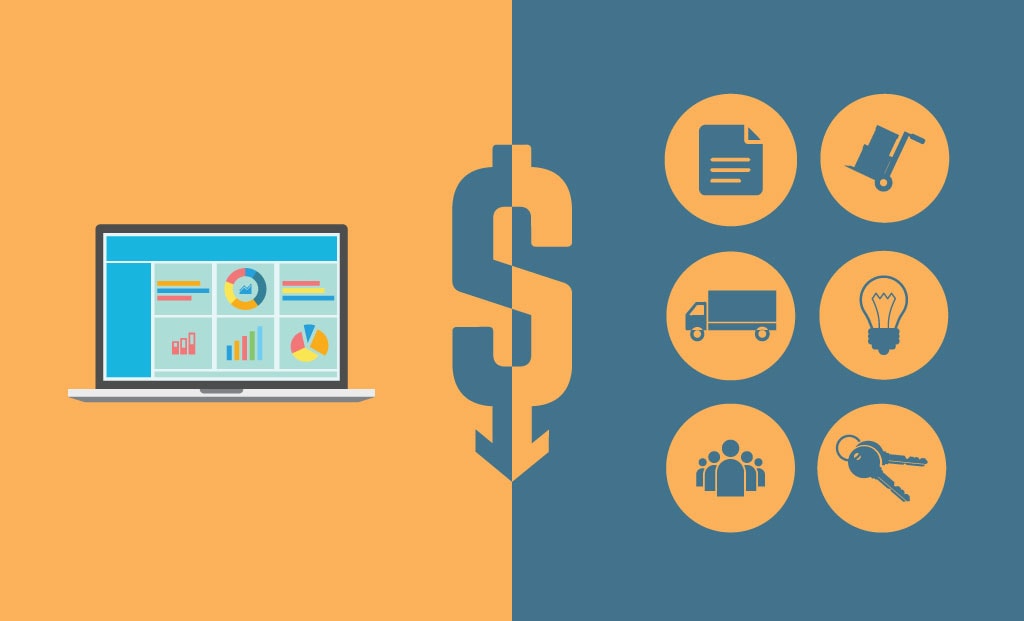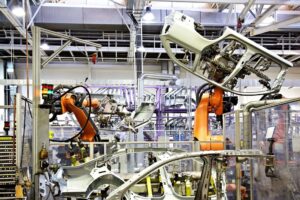Every manufacturer at some point or the other would have struggled to contain overhead and labor costs. These cost categories have a direct impact on the bottom-line and other manufacturing areas.
Overhead Cost Management Challenges
To successfully manufacture products and dispatch to customers on time, they need basic necessities such as electricity, water, equipment, spare parts, communications, paper, pens, toilets, pantry and most importantly, labor.
These are basic utilities without which, employees cannot carry out their day to day work. Which means, products cannot be produced on time and customers do not get them as per their delivery dates. Eventually, the customers are dissatisfied, the manufacturer’s reputation goes for a toss, customers move their businesses to competitors and the manufacturer is forced to shut shop.
Some manufacturers resort to extreme measures such as cutting down on basic utilities leading to disgruntled employees/external staff which is not the right thing to do.
Managing labor is one of the prime challenges for manufacturers and form the biggest line item on their P&L. Age old solutions such as capturing job-time and employee attendance on paper and spreadsheet doesn’t help the manufacturer to control labor operations and costs.
Lack of on-time labor availability and leads to a few scenarios such as,
- Job delays and scheduling issues where the concerned personnel responsible for dispatching work orders is absent and machine operators don’t have a job to work on leading to production delays.
- An inventory operator is busy with physical inventory count and hasn’t updated the inventory on time. This lack of inventory visibility leads to delayed jobs, false emergency procurement at high costs and unnecessary downtime.
- An inexperienced personnel dispatches incorrect work orders, routers, BOMs to the shop floor leading to production delays, and labor/machine overtime.
Instances such as the above slows down labor efficiency to a large extent, leading to inefficient operations, cash flow problems and an ever-thinning bottom-line.
Manufacturing becomes profitable when direct costs (raw materials, production equipment, labor) and indirect costs (utilities, floor space rental, taxes, depreciation, insurance, maintenance, material handling) are adequately balanced to derive profitability and smooth operation flow.
How ERP helps control Labor and Overhead Costs?
ERP for Efficient Labor Control
Manufacturers can easily track labor costs, employee attendance, payroll, taxes and other associated tasks with an ERP. With an ERP’s mobility feature, machine operators can instantly login and logout from specific jobs from their handheld devices. All this, without leaving their machine centers. They can also access work orders, parts specifications, BOMs, routers and other production parameters from their devices thereby increasing the speed of operations and efficiency. Also, supervisors can ensure that the right job is allocated to the right operator to avoid unnecessary errors, material wastage, machine downtime, job delays etc.
The ERP records every bit of information thereby helping supervisors to arrive at accurate labor utilization time that can be reconciled with every job that passes through the shop floor. Any job that requires extended labor time also gets recorded within the ERP system, thereby keeping a track of labor and machine overtime hours and associated costs.
Overall, an ERP’s ability to record and dispatch information in real time helps manufacturers to lower employee and machine downtime, arrive at accurate estimates and estimate vs. actual cost variances, precise overtime tracking, and real-time job costing.
ERP for Overhead Costs
As mentioned earlier, overhead costs include employee salaries and benefits, facility, utilities (electricity, water, space rental, pantry, office supplies, toiletries etc.), machines, outside contracting, spare parts, tools and materials.
An ERP lets manufacturers to create and configure cost types for various cost categories (materials, overheads, labor). It provides various accounting methods such as Standard Costing and Actual Costing. Manufacturers have an option to either calculate overhead costs based on their origin i.e. cost centers or calculate the costs based on each product manufactured.
Most manufacturers use a mix of Standard and Actual Costing as applicable. In actual costing, manufacturers can capture and track costs in real-time as and when they procure materials, utilize them to manufacture products and deliver them to customers.
Each cost can be tagged to a BOM (as an item) or to a specific work order. This becomes a part of the overall manufacturing process and supervisors can easily arrive at an accurate product cost and compare it with the estimated cost. They can constantly monitor these costs based on every job, work order, item type, department, personnel shift, day/month/year, customer etc. All this data helps them to derive improvements in the procurement and manufacturing process and reduce the overall cost of the product.
Conclusion
An ERP software automates virtually every manufacturing process including the entire cost recording, tracking and reporting process. Every cost incurred can be entered into the system, tagged to respective jobs and tracked throughout the entire product life-cycle journey. Every personnel can input their login and logout time from a specific work center for a specific job in a specific shift. Every material procured from suppliers can be easily tracked till it goes into the final manufactured product.
All this, provides a greater visibility of manufacturing operations, especially with respect to costing and machine, material and manpower utilization. Bottom line shows a healthy trend, labor performance improves, production is streamlined and customers get their orders on time. All this points to a healthy profitability and organizational growth.
It’s time to stop telling, “I can’t reduce accounting & financial inefficiencies” and automate your financial workflows with OmegaCube ERP’s Accounting and Financials module







5 Responses
Just exploring your services
Non ut quae sit expedita adipisicing minima amet facilis possimus et quae nihil
Omnis deserunt ullam exercitationem temporibus
Voluptas quam Nam quis omnis eveniet voluptatem Doloribus dolore doloremque facilis voluptatem Quis veniam labore accusamus et
Corporis dolorem exercitationem quia neque obcaecati quo sed autem dolor